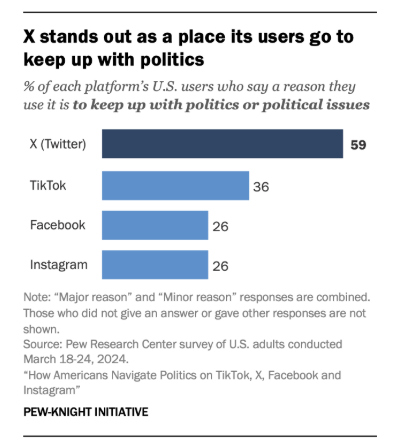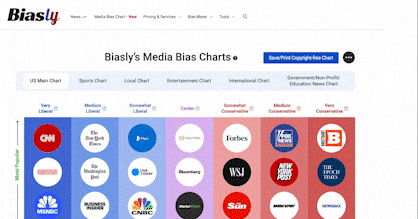
While ethical standards remain a core principle of journalism, concerns about declining objectivity have grown in today’s media landscape. Subtle shifts in tone, framing, and emphasis can sometimes reflect not only ideological leanings but also a broader incentive to attract attention and drive engagements, often a hallmark of media bias. This dynamic is increasingly visible across daily life, social media, and even traditionally neutral news outlets, where sensationalism may at times take precedence over balanced reporting.
From clickbait headlines to viral misinformation, controversy sells. In today’s commercialized media landscape, where ratings dictate survival, news outlets recognize that negativity is a powerful attention grabber.
In the world of media, “there’s no such thing as bad publicity” isn’t just a saying — it’s a strategy. This article will examine how the creation of controversy, facilitated by negativity bias and social media, is employed to mitigate commercial pressures.
Commercial Pressures
We live in the digital age, an era characterized by abundant and easily accessible knowledge. This surplus of online information has a profound impact on the world of journalism, turning it from a controlled field into a fragmented, oversaturated, and competitive marketplace.
A study published in the International Journal of Advanced Research (IJAR) examines this excess of information and its impact on the media landscape, particularly its economic implications. It explores a shift from direct discovery to distributed discovery. With direct discovery, audiences access content directly from the source. However, distributed discovery occurs when content is disseminated through platforms such as news aggregators or social media sites (Kafedjiska, 2023).
“In 2018, for two-thirds of online news users, distributed forms of discovery were their primary way of accessing and finding news online” (Kafedjiska, 2023).

Source: (Kafedjiska, 2023)
The decentralization of information poses a significant challenge for companies and journalists. Media outlets have little to no control over how their stories are presented, altered, or interpreted; algorithms and user preferences filter content in diverse ways.
Additionally, attention is divided among multiple avenues, making it more challenging to stand out. Economically, media organizations rely on their visibility and ratings, both of which decrease as audience attention disperses among multiple sources. Since this attention is fragmented across channels, media organizations feel intense pressure to differentiate themselves. There is an increased need for competition to maintain relevance, which in turn induces a power struggle between journalists and commercial interests.
Hanusch et al. (2019) explain this in their article, “The Power of Commercial Influences: How Lifestyle Journalists Experience Pressure from Advertising and Public Relations.”
“Companies once separated the economic and journalistic sides of their business, but the increasing desire, and economic need, to stand out has merged the two fields. The so-called ‘wall’ between the two has crumbled, and “economic influences are felt both on the organizational level and in individual journalists’ daily routines and practices” (Hanusch et al., 2019).
The commercial desire to boost ratings blurs the line between news and marketing. Additionally, more than one-third of journalists surveyed acknowledged that advertising concerns shaped the content of their stories (Hanusch et al., 2019). In short, the news is no longer just about reporting; it’s about marketing. And controversy is one of the most effective marketing tools.
The Bias Towards Negativity
Psychologically, humans are hardwired to respond more strongly to harmful stimuli, a phenomenon known as the negativity bias (Cherry, 2023). No matter how many compliments we receive, a single negative comment will consume our thoughts. Negativity draws attention. So, it is no surprise that media companies exploit this bias for commercial gain.
A 2024 study by Springer Nature explored how readers interact with news headlines:
“The findings reveal that the selection rate of negative news headlines is significantly higher than that of positive news. Moreover, we observed a tendency to amplify the negativity of the news content during the headline summarization process. These findings suggest a clear psychological mechanism of negativity bias in the process of reading and sharing online news, potentially explaining the effectiveness of clickbait strategies (Acerbi, 2019).”
Sensationalism, negativity, and controversy are effective strategies for securing clicks and visibility. Readers are more likely to click on headlines that highlight conflict and scandal.
Headlines often emphasize the most dramatic or provocative elements of a story, sometimes at the expense of full context. This advertising tactic undermines the integrity of information, distorting the narrative and exacerbating bias in the media.
Politicians have adopted this technique, as seen in the paper Give the Media What They Need: Negativity as a Media Access Tool for Politicians. Poljak (2024) highlights how politicians shamelessly employ this strategy to enhance audience engagement, regardless of the ethical implications or veracity of their statements.
A 2024 article from the Journal of Information & Politics shares how President Donald Trump spurred media attention through his controversial tweets on X (formerly Twitter). Whether intentional or not, his contentious posts garnered increased media attention and even led to a temporary ban from the app (Zhang et al., 2024).
Evidently, companies and politicians amplify negative ideas and stir controversy to gain traction. They may be gaining a political following, but they are also creating political bias in the process. They utilize any controversy necessary to boost their audience engagement and ratings.
The Role of Social Media
We already know social media is everywhere. It is the perfect example of negativity bias and distributed discovery in action. Social media apps, with their 5.42 billion users, enable the near-limitless dissemination of information. The same story can be shared by anyone in any way.
A 2024 Pew Research Center survey reveals that users look to these sites for political updates:
- TikTok
- X (formerly Twitter)
Source: Pew Research

While misinformation is serious, even in superficial stories and events, it becomes even more problematic when it addresses crucial political and societal issues.
During the COVID-19 pandemic, Oliveira and Azevedo (2021) conducted a study analyzing media coverage and user reactions on Facebook. By examining like/dislike functions, emoticon usage, and comments, they found rampant controversy fueled by inconsistent information and emotionally charged statements. Already anxious audiences were overwhelmed with a flood of conflicting reports and negative headlines. Furthermore, the aggravated comments and reposts from social media users did nothing to soothe the frustration.
Social media algorithms prioritize engagement. Since controversial posts tend to gain the most traction, they are often pushed to the top of users’ feeds. As a result, the most sensationalized stories get the most exposure, fueling an endless cycle.
To put it more clearly, social media algorithms tend to amplify negativity, rewarding controversial behavior with greater visibility and placing it in the spotlight.
All in all, to increase ratings, companies must reach a large audience and capture their attention. What better way to commercialize your brand than through social media: a place that multiplies controversy with the help of its billions of users. As predicted, media outlets take advantage of this and lean into the chaos. It is the ideal environment for misinformation and sensationalism, creating a powerful feedback loop between attention and exposure, often at the expense of balanced reporting!
Takeaways
As we’ve seen, the creation of controversy, amplified through social media, is a prevalent advertising tactic used for commercial gain. Journalism has become heavily influenced by economic pressures, resulting in a shift away from credible, fact-based reporting. To improve awareness and resilience against sensationalism, users can benefit from media literacy education that empowers them to detect manipulation.
While journalism’s core mission is to inform the public, economic pressures have led some outlets to prioritize attention-driven content over depth and objectivity. Identifying truly unbiased news sources can be difficult, but Biasly’s Media Bias Chart offers a visual tool to compare political leanings and accuracy. The twisted narratives to increase ratings add to this challenge, making it all the more crucial for us as consumers to be critical of what sources we read and trust. Biasly’s Media Bias Checker can help verify the reliability and neutrality of news sources.
While the financial survival of media outlets is understandable, we must ask: at what cost? Is it worth sacrificing journalistic integrity for the sole purpose of boosting ratings?


























